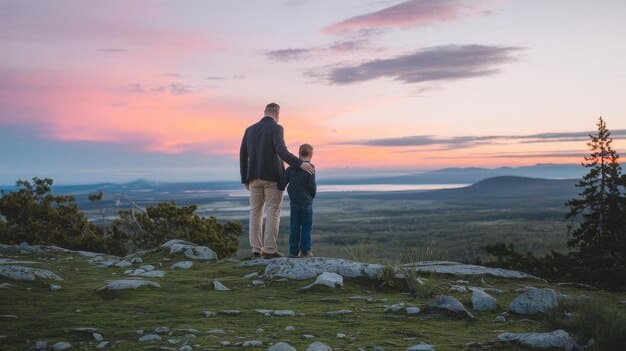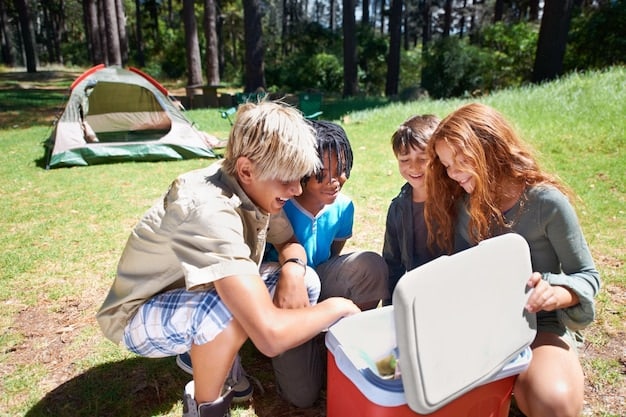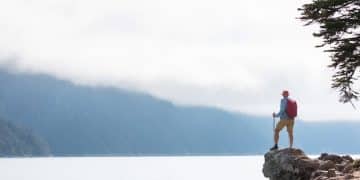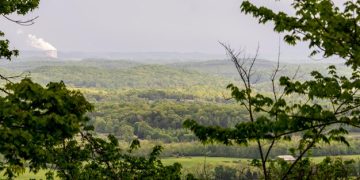Family Travel: Conquer 3 National Parks in 7 Days!

Family Travel Challenge: Can You Visit 3 National Parks in One Week? A Step-by-Step Guide provides a detailed plan to explore multiple national parks within a single week, offering tips on efficient planning, travel strategies, and family-friendly activities to maximize your national park experiences.
Embarking on a national park adventure with your family can create memories that last a lifetime. But what if you could visit not just one, but three national parks in a single week? The Family Travel Challenge: Can You Visit 3 National Parks in One Week? A Step-by-Step Guide is here to make that dream a reality.
Planning Your Family’s National Park Adventure
Before you even pack your bags, meticulous planning is essential for a successful three-park adventure. This initial stage sets the foundation for a smooth and enjoyable trip, reducing potential stress and maximizing your time.
Choosing the Right Parks
The first step is selecting the national parks that align with your family’s interests and capabilities. Consider factors such as the age of your children, their physical abilities, and the park’s accessibility.
Creating a Detailed Itinerary
- Prioritize must-see attractions and activities in each park.
- Allocate realistic travel time between parks, accounting for potential delays.
- Build in buffer time for unexpected events or spontaneous adventures.
A well-structured itinerary ensures that you make the most of your limited time, hitting all the highlights without feeling rushed. Having a clear plan allows everyone in the family to know what to expect, fostering excitement and anticipation.
Efficient Travel and Accommodation Strategies
Efficient travel and comfortable accommodations are critical when tackling three national parks in one week. Streamlining your transportation and securing suitable lodging will contribute significantly to a more enjoyable and less exhausting experience.

Transportation Options
- Renting a car provides flexibility and convenience for traveling between parks.
- Consider flying into a central airport to minimize driving distances.
- Explore shuttle services or public transportation within the parks themselves.
Accommodation Choices
Choosing the right type of accommodation can greatly impact your family’s overall comfort. Options range from camping under the stars to staying in cozy lodges or vacation rentals.
Booking accommodations well in advance is highly recommended, especially during peak seasons. This ensures that you secure the best options and prices, and avoid the stress of last-minute searches.
Packing Essentials for National Park Exploration
Packing appropriately is crucial for comfort, safety, and enjoyment during your national park visits. Being prepared for various weather conditions and activities will ensure a smooth and memorable experience.
Clothing and Gear
Layering is key to adapting to changing weather patterns. Pack moisture-wicking fabrics, waterproof outerwear, and sturdy hiking shoes.
Sun protection is essential, so bring hats, sunglasses, and sunscreen. Insect repellent is also a must, especially during warmer months. A basic first-aid kit should be readily available for minor injuries.

Food and Hydration
Staying hydrated is critical, especially during physical activities. Pack plenty of water bottles or a hydration reservoir.
- Bring nutritious snacks such as trail mix, fruit, and energy bars to keep everyone energized.
- A portable cooler can be useful for storing perishable items.
- Consider packing a picnic lunch to enjoy amidst the scenic beauty of the parks.
Adequate preparation in terms of what to pack is extremely importent when traveling with family. Planning around packing can make the whole trip much smoother.
Maximizing Your Time in Each National Park
With limited time, it’s important to prioritize activities and efficiently navigate each national park. Strategic planning and a focused approach can help you experience the best each park has to offer.
Prioritizing Activities
Identify the must-see landmarks and experiences in each park. Consider guided tours, ranger programs, or scenic hikes that cater to your family’s interests.
Utilize park maps and information guides to efficiently plan your route. Allocate sufficient time for each activity, accounting for potential delays or crowds.
Tips for Navigating Crowds
Visit popular attractions early in the morning or late in the afternoon to avoid peak crowds. Consider visiting during the off-season for a more tranquil experience.
Embrace the opportunity to explore lesser-known trails and hidden gems. These areas often offer stunning scenery without the throngs of tourists.
Family-Friendly Activities and Educational Opportunities
National parks offer a wealth of family-friendly activities and educational opportunities. Engaging in these experiences can foster a deeper appreciation for nature and create lasting memories.
Junior Ranger Programs
Participate in the Junior Ranger program, which provides children with interactive activities and challenges to learn about the park’s history, ecology, and conservation efforts.
Nature Hikes and Wildlife Viewing
Embark on scenic nature hikes, keeping an eye out for wildlife. Bring binoculars to enhance your viewing experience. Keep kids engaged by pointing out interesting plants and animals; help create future nature lovers.
Attending ranger-led programs and interpretive talks can provide valuable insights into the park’s unique features and natural history.
Safety Considerations for National Park Adventures
Safety should always be a top priority when exploring national parks. Being aware of potential hazards and taking necessary precautions will ensure a safe and enjoyable adventure for your family.
- Stay on marked trails and follow posted warnings.
- Be aware of wildlife and maintain a safe distance.
- Inform someone of your hiking plans and estimated return time.
Weather Awareness
Monitor weather conditions closely, as they can change rapidly in mountain environments. Pack appropriate clothing and gear for various weather scenarios.
Be prepared for potential hazards such as thunderstorms, flash floods, or extreme temperatures. Carry a weather radio or use a weather app to stay informed.
| Key Point | Brief Description |
|---|---|
| 🗺️ Planning | Map out parks, accommodation, and activities. Book in advance. |
| 🚗 Transportation | Rent a car, or utilize internal park shuttles for convenient travel. |
| 🎒 Packing | Bring layers, sturdy shoes, and essentials (food, water, sunscreen). |
| 👨👩👧👦 Family | Choose activities suitable for the whole family. Stay safe and informed. |
Frequently Asked Questions
▼
Yes, with careful planning and a focused itinerary, it’s definitely achievable. Focus on key attractions and minimize travel time between parks to make the most of your week.
▼
Spring and fall usually offer mild weather and fewer crowds. Summer is popular but can be hot and crowded. Winter is stunning but can have limited access due to snow.
▼
Costs vary based on travel style, accommodation choices, and food preferences. Budget for travel, lodging, park entrance fees, food, and activities. Research average costs to plan effectively.
▼
Yes, many national parks offer family-friendly trails, ranger programs, and visitor centers geared towards children. Choose parks and activities that match your children’s ages and abilities.
▼
Build buffer time into your itinerary to accommodate unexpected delays. Pack a basic first-aid kit and have emergency contacts readily available. Stay flexible and be prepared to adjust plans as needed.
Conclusion
Embarking on a family travel challenge to visit three national parks in a week is an ambitious but highly rewarding endeavor. With thoughtful planning, efficient execution, and a spirit of adventure, you can create unforgettable memories while experiencing the natural wonders of the United States.





